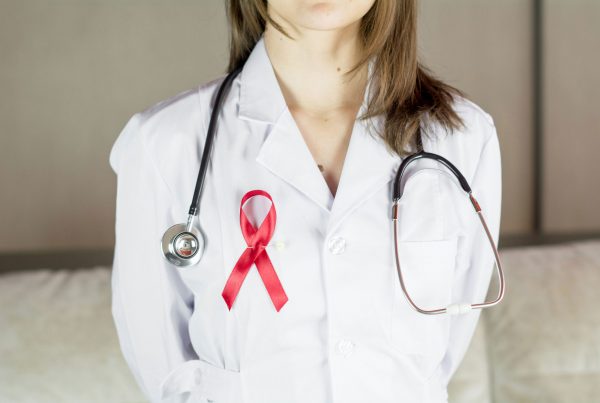The understanding most people have of bipolar disorder as a psychiatric condition that involves extreme mood fluctuations is insufficient to say the least. In reality, the DSM-5 recognizes seven different types of bipolar disorders – the three main types being Bipolar I, Bipolar II, and Cyclothymic Disorder – and they are each distinguished by different patterns of emotional states. In this blog, we’ll focus on exploring cyclothymic disorder, how it differs from bipolar I and bipolar II, and how it is treated.
First Things First
The key to understanding any bipolar disorder type is first having a grasp on the clinical terms that describe the emotional states those with a bipolar disorder experience. They are: manic, hypomanic, and depressive episodes. Manic episodes are characterized by an elevated, expansive, or irritable mood, and persistently increased activity or energy that is present for most of the day, every day, for at least a week. According to the DSM-5, a manic episode must also be accompanied by three (four; if mood is only irritable) of the following symptoms:
- Inflated self-esteem or grandiosity
- Decreased need for sleep (i.e. feeling rested after only 3 hours of sleep)
- More talkative than usual or pressure to keep talking
- Flight of ideas or subjective experience that thoughts are racing
- Distractibility, as reported or observed
- Increase in goal-directed activity or psychomotor agitation (i.e. purposeless non-goal-directed activity)
- Excessive involvement in activities that have a high potential for painful consequences
Hypomanic episodes are described as less severe than manic episodes. However, manic and hypomanic episodes have the same set of identifiers (listed above). There are two key distinguishing features of a hypomanic episode from a manic episode. First, the disturbance in mood and functioning is not enough to cause marked impairment in a hypomanic episode. Second, their duration is different – manic episodes last at least a week and hypomanic episodes last at least four consecutive days.
Finally, major depressive episodes are characterized by persistent hopelessness, pessimism, and anhedonia – an inability to enjoy. According to the DSM-5, a major depressive episode includes five or more of the following symptoms during the same 2-week period:
- Depressed mood most of the day, nearly every day, as indicated by either subjective report
- Markedly diminished interest or pleasure in all, or almost all, activities most of the day, nearly every day
- Significant weight loss when not dieting or weight gain, or decrease or increase in appetite
- Insomnia or hypersomnia
- Psychomotor agitation or retardation
- Fatigue or loss of energy
- Feelings of worthlessness or excessive or inappropriate guilt
- Diminished ability to think or concentrate, or indecisiveness
- Recurrent thoughts of death, suicidal ideation, or attempted suicide
What is Cyclothymic Disorder?
Cyclothymic disorder, also known as cyclothymia, is a type of bipolar disorder that involves chronic fluctuations between periods of hypomanic and depressive symptoms. However, the hypomanic and depressive symptoms are of insufficient number, severity, pervasiveness, or duration to meet the full criteria for either type of episode. It is also clinically recognized by its longer duration as DSM-5 diagnostic criteria only permit a mental health care provider to assess an individual for cyclothymic disorder after two years of recurrent periods of hypomanic and depressive symptoms. Fluctuating, discrete periods of hypomanic and depressive symptoms must be persistent for an initial two year period (one year for children and adolescents), and any symptom-free period must last no longer than two months. If at any point in the initial two year period an individual experiences a true major depressive, manic, or hypomanic episode, their condition may no longer be assessed as cyclothymic disorder and diagnosis instead turns to major depressive disorder, bipolar I disorder, or other specified or unspecified bipolar and related disorder, respectively.
Cyclothymic disorder is commonly labeled as the least severe type of bipolar disorder since the symptoms that distinguish it from other bipolar disorders are not severe enough to be clinically considered full hypomanic or depressive episodes. Still, the chronic and recurrent nature of cyclothymic disorder is enough to significantly disrupt or impair a person’s day-to-day life. Those with cyclothymic disorder may struggle with forming and maintaining social, familial, work, and romantic relationships because of their frequent and persistent mood fluctuations. Although a person with cyclothymic disorder does not experience true hypomanic and depressive episodes, individual symptoms can seriously negatively impact a person’s life in a variety of short- and long-term ways. For example, hypomanic symptoms like increased impulsivity, decreased need for sleep, or increased distractibility may result in poor financial decisions and job performance, while depressive symptoms like fatigue and anhedonia can result in a disregard for personal hygiene and an increasingly sedentary lifestyle.
Epidemiological studies suggest cyclothymic disorder typically begins in adolescence or early adulthood and gradually increases in severity and impairment with age – especially if it goes undiagnosed and untreated. It has a lifetime prevalence of approximately 0.4%-1% in the general population, but may present as high as 5% in clinical settings. While the prevalence of the condition is about the same in male and females, females are more likely than males to seek treatment and they are diagnosed more than males (3:2 ratio). As with most psychiatric conditions, the cause of cyclothymic disorder is unknown but there is strong evidence for genetic influence as twin studies found the concordance rate to be about 57% in identical twins and another study found that 30% of those with cyclothymic disorder have a family history of some type of bipolar disorder. Those with cyclothymic disorder are also at an increased risk (15%-20%) of developing bipolar I or bipolar II disorder. Comorbid substance use disorders, sleep disorders, and ADHD (in children) are also common in those with cyclothymia.
Cyclothymic Disorder vs Bipolar Disorder
To reiterate, cyclothymic disorder is a type of bipolar disorder. It belongs to a class of conditions in the DSM-5, Bipolar and Related Disorders, characterized by shifts in mood with varying degrees of highs and lows. Therefore, this discussion will concern the differences between cyclothymic disorder and the other main types of bipolar disorder, bipolar I and bipolar II.
Bipolar I disorder is what the average person thinks of when they describe bipolar disorder: a fluctuation between extreme highs and lows. In fact, it was previously clinically referred to as “manic-depressive disorder.” So, whereas cyclothymic disorder involves hypomanic and depressive symptoms, bipolar I disorder involves full-scale manic, and often, depressive episodes. The DSM-5 states a person’s manic episode “may have been preceded by and may be followed by hypomanic or depressive episodes,” but the diagnostic criteria for bipolar I is actually more focused upon the presence of a manic episode. In other words, the presence of at least one manic episode is required for diagnosis of bipolar I, while presence of a depressive episode is not. Bipolar I is the only one of the three primary bipolar disorder types to feature, and diagnostically require, presence of a manic episode.
In terms of symptomology, cyclothymic disorder most closely resembles bipolar II disorder. However, unlike cyclothymic disorder which features hypomanic and depressive symptoms, bipolar II involves fluctuation between full-scale hypomanic and depressive episodes. More specifically, bipolar II is characterized by one or more major depressive episodes and at least one hypomanic episode. The depressive episode must last at least two weeks and the hypomanic episode must last at least four consecutive days.
While all three diagnoses require evidence of clinically significant impairment or distress, cyclothymic disorder is still generally considered less impairing than bipolar I or bipolar II because its symptoms are insufficient in number, severity, pervasiveness, or duration to meet the requirements to be considered full-scale hypomanic or depressive episodes. Degree of impairment between the three types of bipolar disorder may be similar in a qualitative sense, such as in the case of difficulty forming and maintaining relationships. However, greater impairment in those with bipolar I and bipolar II are implied by quantitative measures, such as increased number of hospitalizations and days away from work.
Treatment
As with most other psychiatric conditions, the most common forms of treatment for cyclothymic disorder are psychotherapy (talk therapy) and medication. Cognitive Behavioral Therapy (CBT), Dialectical Behavioral Therapy (DBT), and Interpersonal and Social Rhythm Therapy (IPSRT), are some of the most common forms of psychotherapy used to treat bipolar disorders. Psychotherapy can be especially useful in helping an individual gain insights into their condition and its effects. Long term, it can also help reduce the negative effects of a person’s disorder by rebuilding their self esteem, helping them create and maintain healthy daily routines, and developing strategies to cope with emotional distress. There are no medications specifically approved for the treatment of cyclothymic disorder, but mood stabilizers like valproic acid and lithium are commonly prescribed in the treatment of various bipolar disorders in order to reduce the severity of mood fluctuations. Additionally, at the core of cyclothymic disorder is a difficulty with emotional regulation, so medication is typically extremely useful in helping a person access a state of mind that is most receptive to psychotherapy. Mental health care providers tend to stray away from prescribing antidepressants to those with cyclothymic disorder as it could result in a medication-induced hypomanic or manic episode.







